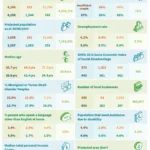
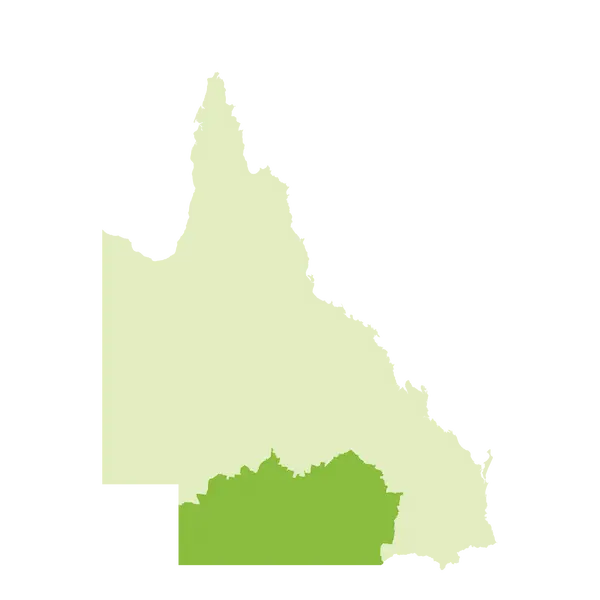
Overview of South West Queensland Region
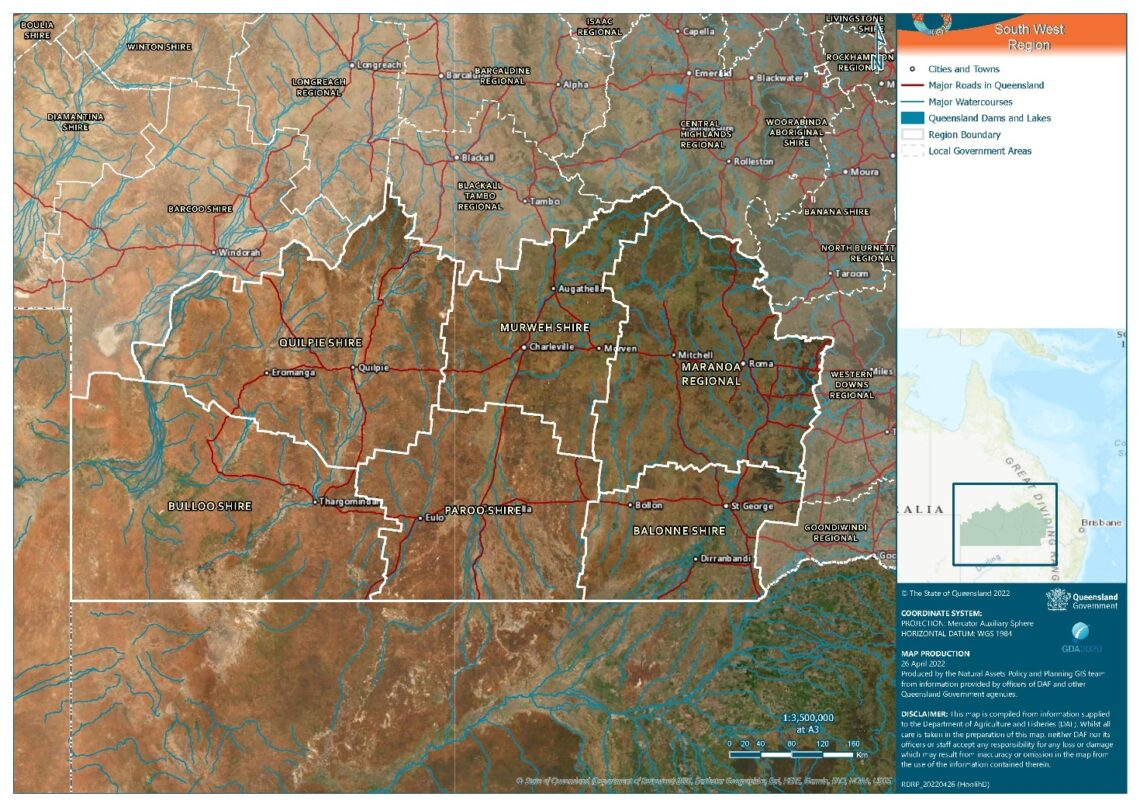
Figure 5: South West Queensland regional map. Source: Department of Agriculture and Fisheries, Queensland Government.
The South West Queensland region is often referred to as the ‘Cornerstone’ of Queensland.
The region’s area is 319,808km² – almost one fifth of the area of the state – and is home to 23,777 residents (ABS 2021). This population density of 0.074 people per km², makes it one of the least populated areas in Queensland. It comprises the Local Government Areas of Maranoa Region, Murweh, Shire of Balonne, Shire of Paroo, Shire of Bulloo and Shire of Quilpie.
The predominance of agriculture (and agricultural supply-chain industries) as a major source of income and employment, makes the region highly vulnerable to the impacts of unseasonal dry periods and droughts. The records for the region indicate that the South West Queensland region is one of the most likely regions in Australia to experience both prolonged droughts and flash droughts in the eastern portion of the region.
Past impacts of drought in this region
Past impacts | People, culture and community
EXTRACTS FROM THE FULL RDRP PLAN
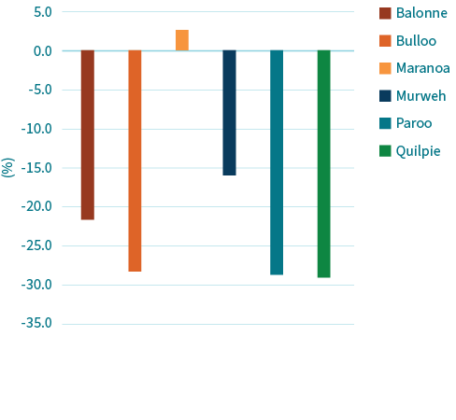
Having strong, ‘healthy’ and ‘vital’ communities is central to building drought resilience in regional Queensland.
The South West Queensland region has been drought-declared for 19 years of the twenty years from 2001–2021. In this time the population of the region has fallen from 15–30% in various LGAs. Whilst there is no official data that can attribute this population decline specifically to drought… anecdotally, people consistently say that the impacts of drought made people leave.
The unemployment rate for the South West Queensland region generally increased for the 2010–20 drought period.
Past impacts | Economy

Many farms and properties have been forced to decrease their reliance on a single source of agricultural income through the diversification of income streams.
This is being achieved through seeking off-farm income as well as introducing a wider range of agricultural activities on farm.
Recent droughts in South West region have also seen a shift away from grazing sheep to an increased prevalence of farming goats.
A number of graziers across the region have reported that “In drought, goats have proven to be far more profitable than trading cattle” (Meat & Livestock Australia, 2020).
Past impacts | Landscape and natural environment
EXTRACTS FROM THE FULL RDRP PLAN

Traditional burning of Ironbark woodland. Source: Southern Queensland Landscapes.
Southern Queensland Landscapes are delivering natural resource management programs promoting practices to improve water infiltration into the soil (soil rehydration) in the western and central areas of the region, with great success. On some properties, up to 30% of the total property area has been bought back into production, providing valuable pasture in dry years.
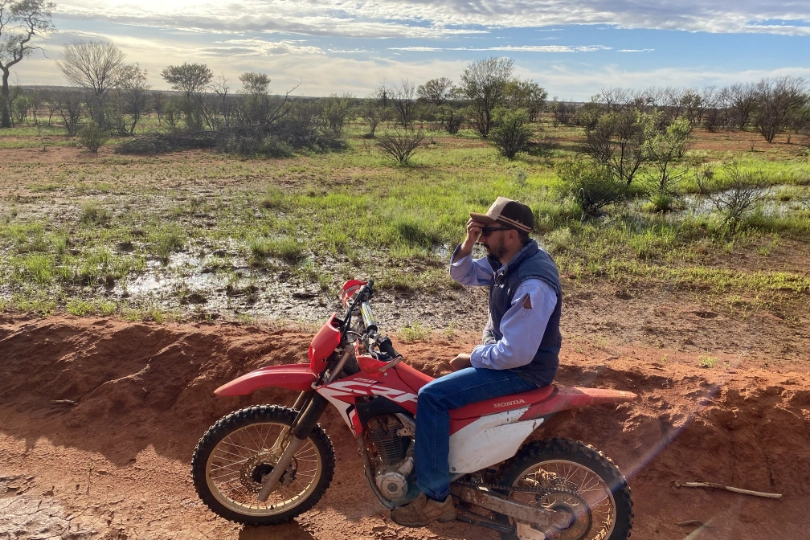
Landscape rehydration banks. Source: Southern Queensland Landscapes.
Past impacts | Infrastructure and built environment
EXTRACTS FROM THE FULL RDRP PLAN
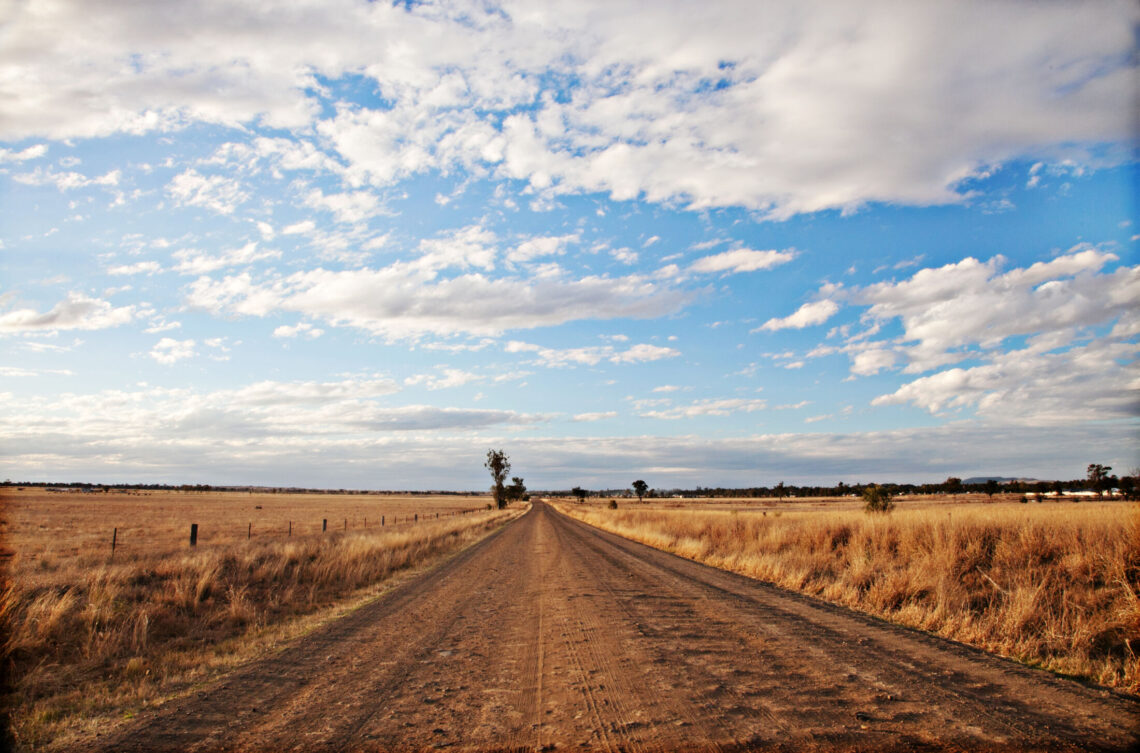
Infrastructure takes many forms including physical infrastructure such as roads, rail lines, water storages/ structures (Beardmore Dam and numerous weirs), buildings, weather stations and communication towers and other utility services infrastructure and non-physical infrastructure such as that to allow digital connectivity.
For most infrastructure, the significant impacts of drought come from:
- increasing lack of funds for infrastructure investment and/or maintenance;
- decrease in available (or able) personnel to carry out construction and/or maintenance.
Due to the access to artesian water, the towns of the region generally have high water security during drought.
Past impacts | People, culture and community
EXTRACTS FROM THE FULL RDRP PLAN

Having strong, ‘healthy’ and ‘vital’ communities is central to building drought resilience in regional Queensland.
The South West Queensland region has been drought-declared for 19 years of the twenty years from 2001–2021. In this time the population of the region has fallen from 15–30% in various LGAs. Whilst there is no official data that can attribute this population decline specifically to drought… anecdotally, people consistently say that the impacts of drought made people leave.
The unemployment rate for the South West Queensland region generally increased for the 2010–20 drought period.
Past impacts | Economy

Many farms and properties have been forced to decrease their reliance on a single source of agricultural income through the diversification of income streams.
This is being achieved through seeking off-farm income as well as introducing a wider range of agricultural activities on farm.
Recent droughts in South West region have also seen a shift away from grazing sheep to an increased prevalence of farming goats.
A number of graziers across the region have reported that “In drought, goats have proven to be far more profitable than trading cattle” (Meat & Livestock Australia, 2020).
Past impacts | Landscape and natural environment
EXTRACTS FROM THE FULL RDRP PLAN

Traditional burning of Ironbark woodland. Source: Southern Queensland Landscapes.
Southern Queensland Landscapes are delivering natural resource management programs promoting practices to improve water infiltration into the soil (soil rehydration) in the western and central areas of the region, with great success. On some properties, up to 30% of the total property area has been bought back into production, providing valuable pasture in dry years.

Landscape rehydration banks. Source: Southern Queensland Landscapes.
Past impacts | Infrastructure and built environment
EXTRACTS FROM THE FULL RDRP PLAN

Infrastructure takes many forms including physical infrastructure such as roads, rail lines, water storages/ structures (Beardmore Dam and numerous weirs), buildings, weather stations and communication towers and other utility services infrastructure and non-physical infrastructure such as that to allow digital connectivity.
For most infrastructure, the significant impacts of drought come from:
- increasing lack of funds for infrastructure investment and/or maintenance;
- decrease in available (or able) personnel to carry out construction and/or maintenance.
Due to the access to artesian water, the towns of the region generally have high water security during drought.
Likely future impacts of drought in this region
Future impacts | People, culture and community

Regional population will decrease with only Maranoa Shire having minimal increase.

Increase in ageing – both ‘on-farm’ and in regional centres and towns/villages.
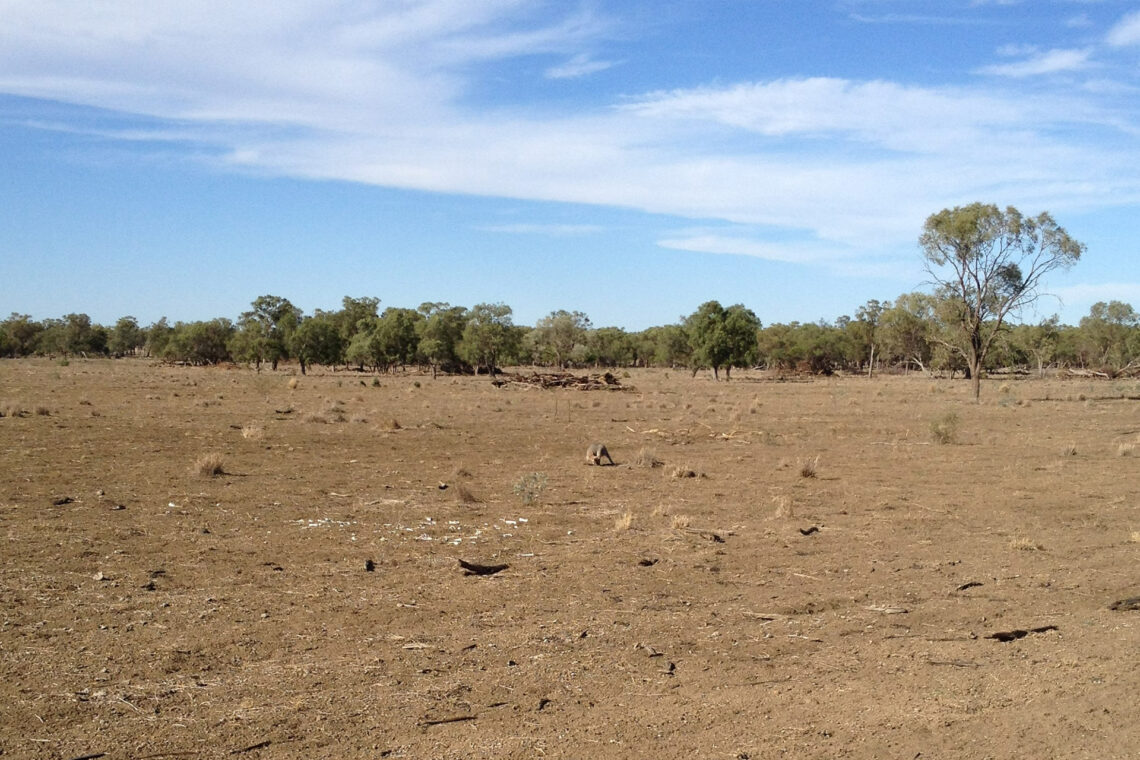
Increase in heatwave occurrence.
Future impacts | Economy
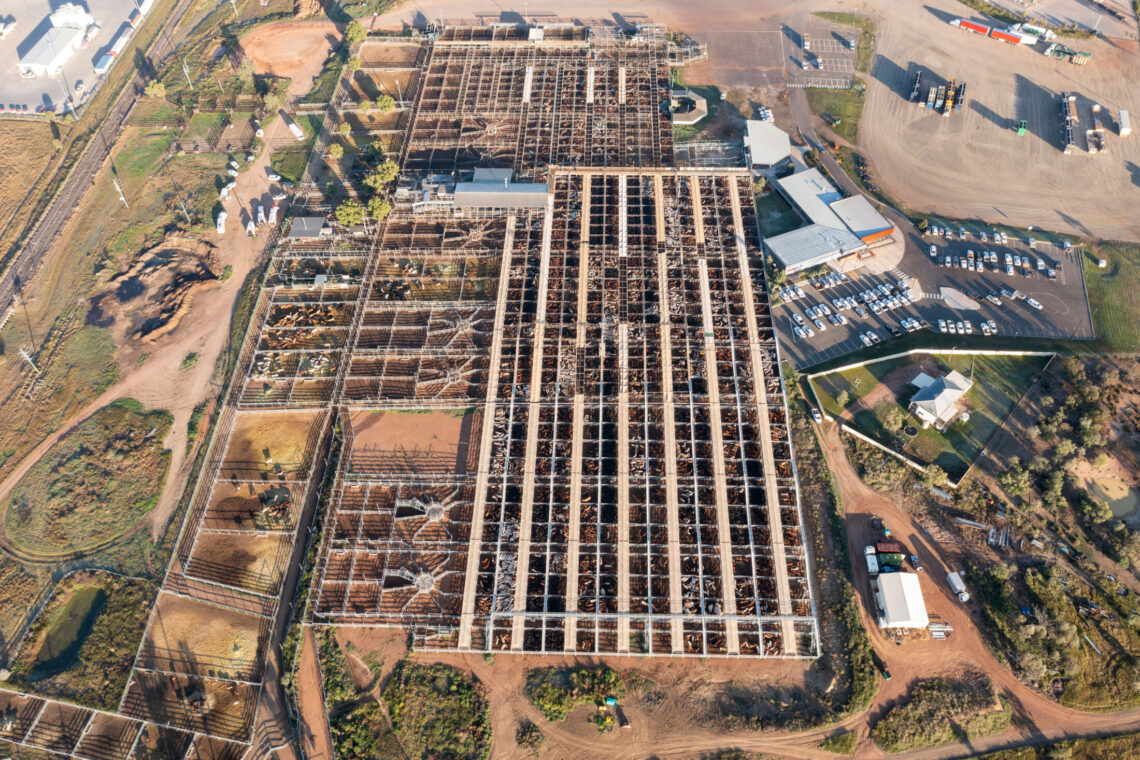
"Increase in livestock, fish stock, and crop losses as a result of the exacerbation of drought conditions may result in significant consequences for already strained business owners and communities."
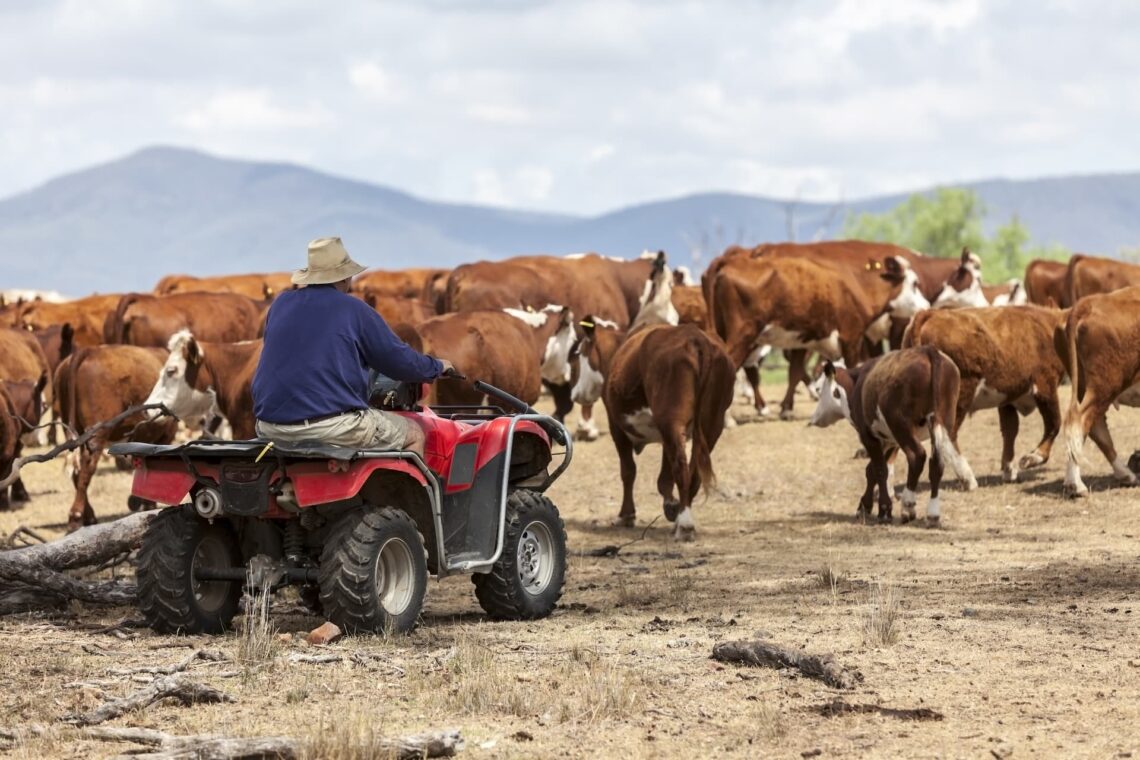
"Substantial impacts to the agricultural community and wider sector are almost certain due to the impact of sustained elevated temperatures on crops, livestock, and the exacerbation of pre-existing drought conditions and underlying bushfire risk."
Source: Queensland State Heatwave Risk Assessment (2021).

“Rural economies will contract without income sources which are ‘drought proof’.”
Future impacts | Landscape and natural environment
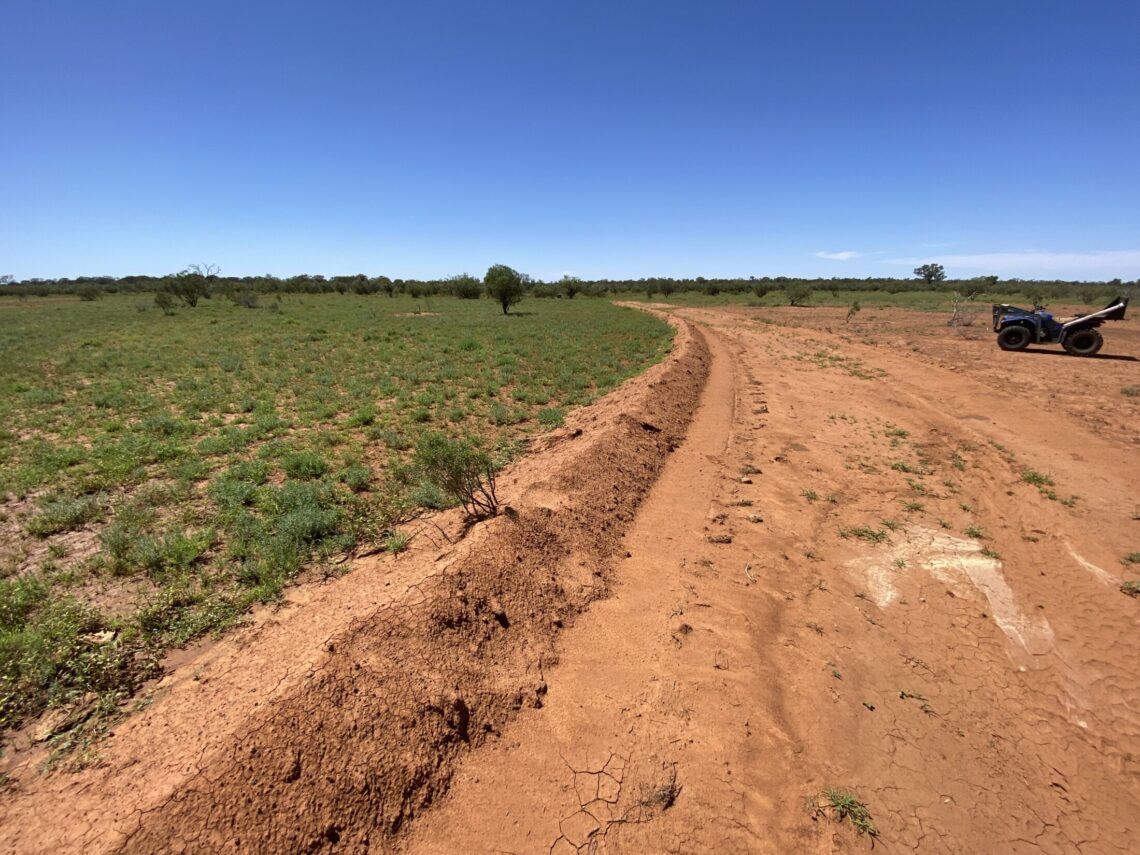
Stock routes will continue to play an important role in reducing the impacts of future droughts. These corridors of native vegetation will continue to provide feed for travelling stock whilst also providing intact habitat to support native fauna and flora during times of drought and protection of significant First Nations’ cultural areas.
Future impacts | Infrastructure and built environment
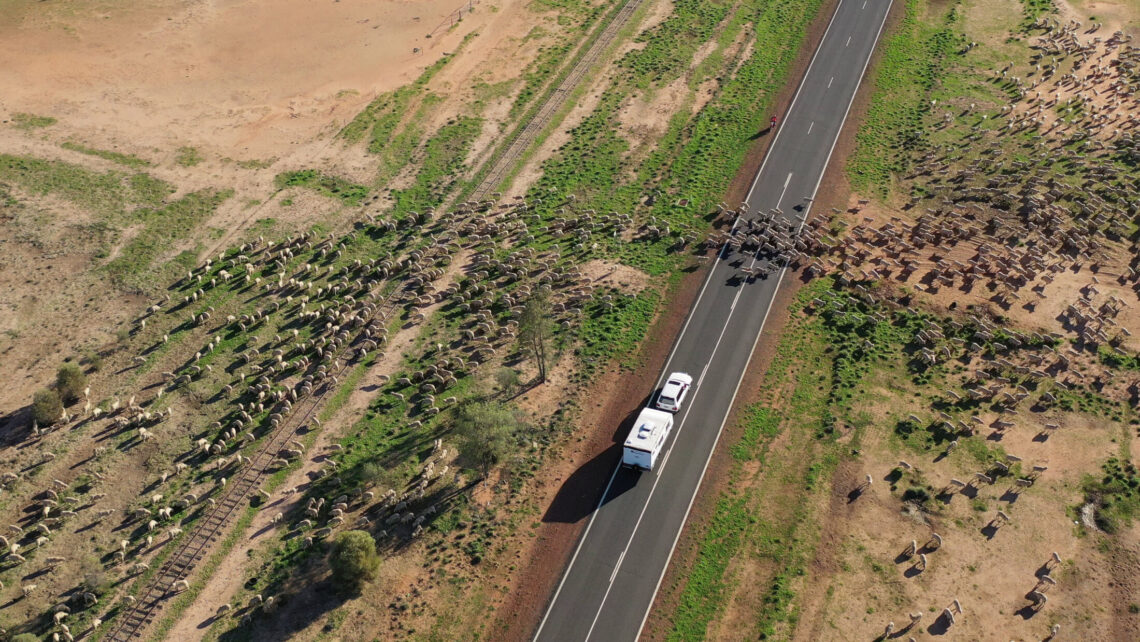
‘If continued investments are not made to maintain current water infrastructure, this could pose water security issues for the region and decrease the region’s liveability, as well as affect agricultural capacity.’
Source: Queensland State Heatwave Risk Assessment (2021).
“Employment and infrastructure subsidies to support the local economy required.”
Future impacts | People, culture and community

Regional population will decrease with only Maranoa Shire having minimal increase.

Increase in ageing – both ‘on-farm’ and in regional centres and towns/villages.

Increase in heatwave occurrence.
Future impacts | Economy

"Increase in livestock, fish stock, and crop losses as a result of the exacerbation of drought conditions may result in significant consequences for already strained business owners and communities."

"Substantial impacts to the agricultural community and wider sector are almost certain due to the impact of sustained elevated temperatures on crops, livestock, and the exacerbation of pre-existing drought conditions and underlying bushfire risk."
Source: Queensland State Heatwave Risk Assessment (2021).

“Rural economies will contract without income sources which are ‘drought proof’.”
Future impacts | Landscape and natural environment

Stock routes will continue to play an important role in reducing the impacts of future droughts. These corridors of native vegetation will continue to provide feed for travelling stock whilst also providing intact habitat to support native fauna and flora during times of drought and protection of significant First Nations’ cultural areas.
Future impacts | Infrastructure and built environment

‘If continued investments are not made to maintain current water infrastructure, this could pose water security issues for the region and decrease the region’s liveability, as well as affect agricultural capacity.’
Source: Queensland State Heatwave Risk Assessment (2021).
“Employment and infrastructure subsidies to support the local economy required.”
Regional strategy
Regional strategy | People, culture and community
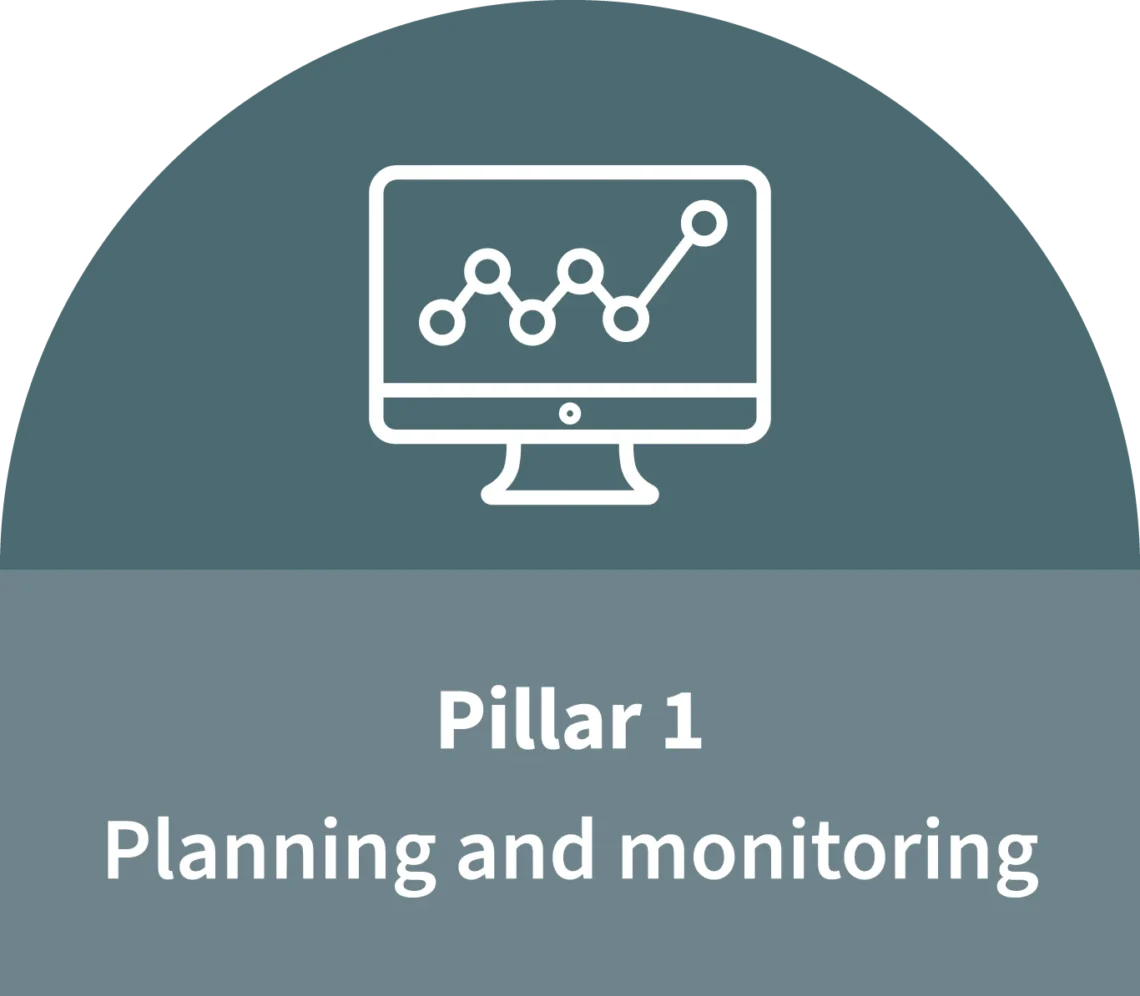
Planning and monitoring
Projected outcome: A regional drought surveillance program in place that monitors and analyses key indicators of current and emerging environmental (meteorological and landscape), social and economic conditions, which are markers of drought.
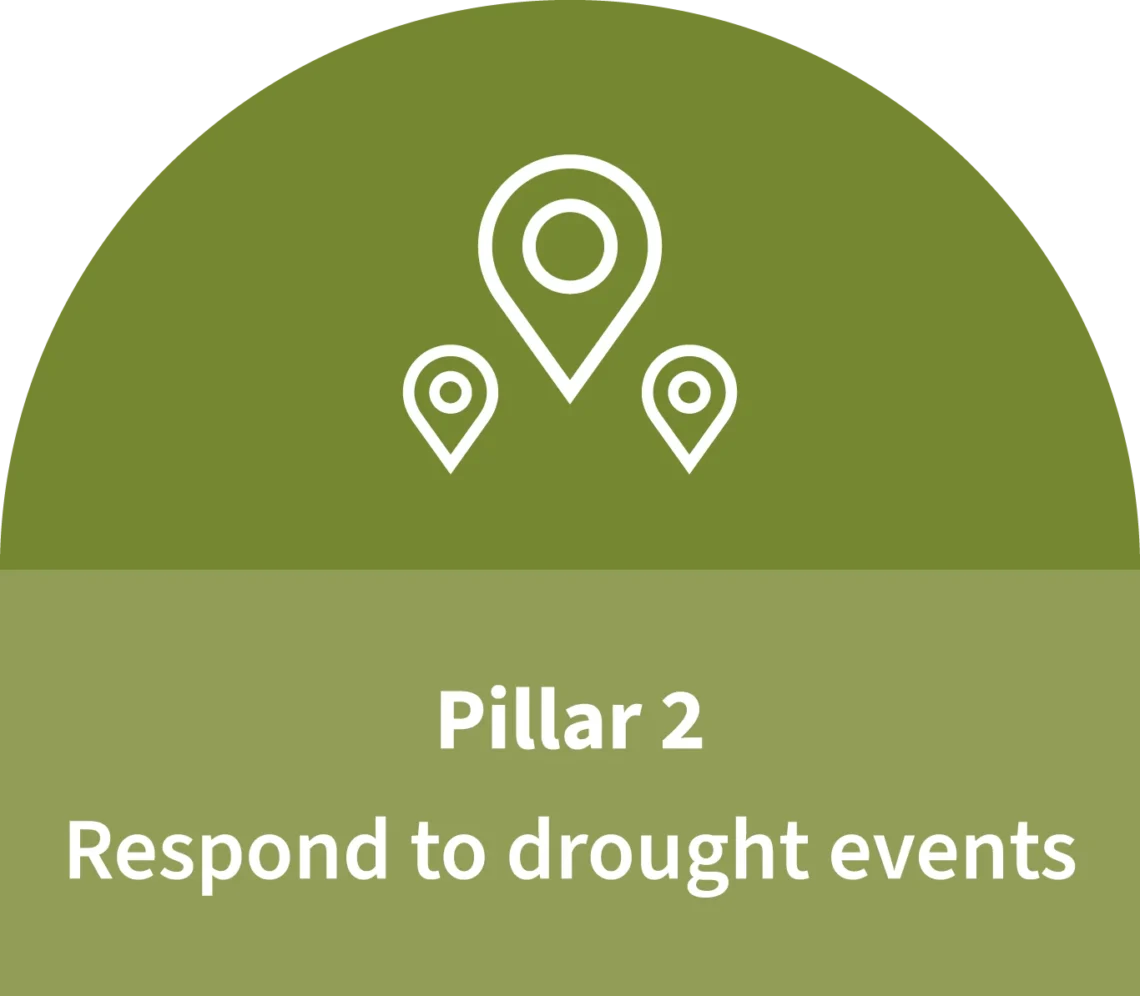
Respond to drought events
Projected outcome: A drought risk and vulnerability assessment framework is updated annually to identify and rate the anticipated exposure and sensitivity to harm of the region’s communities generally and recognised more vulnerable demographic groups specifically.
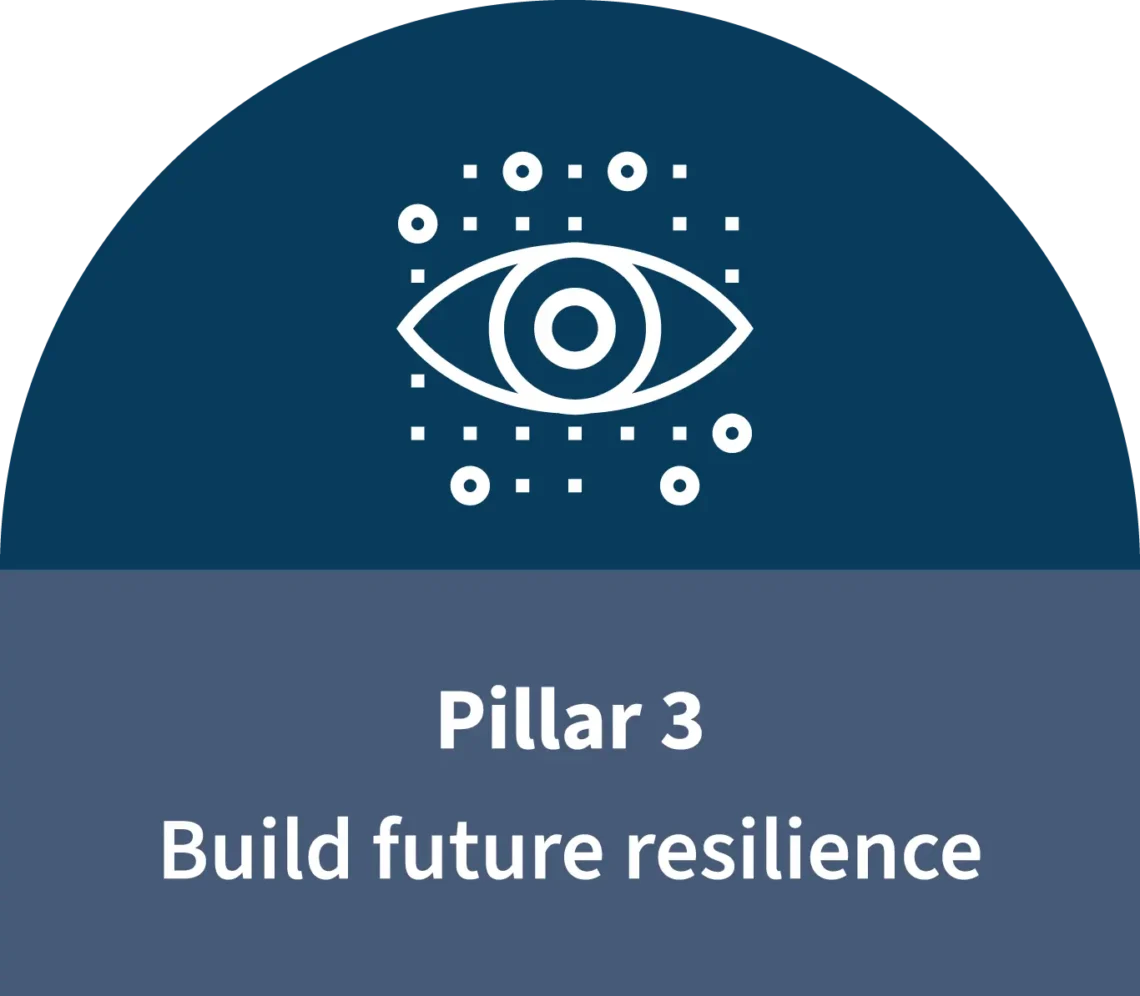
Build future resilience
Projected outcome: There is widely shared and well-informed regional engagement with managing drought risk for long-term community resilience.
United drought resilience
Projected outcome: The region comes together to build drought resilience.
Regional strategy | Economy

Planning and monitoring
Projected outcome: A regional drought surveillance program is implemented that monitors and analyses key indicators of current and emerging environmental (meteorological and landscape), social and economic conditions, which are markers of drought.

Respond to drought events
Projected outcome: A drought risk and vulnerability assessment framework is annually updated to identify and rate the anticipated exposure and sensitivity to harm of the region’s economy generally and recognised more vulnerable enterprise types, supply chains and financial arrangements specifically.

Build future resilience
Projected outcome: A widespread enterprise level drought risk management is established across the region.
Regional strategy | Landscape and natural environment

Planning and monitoring
Projected outcome: A regional drought surveillance program is implemented that monitors and analyses key indicators of current and emerging environmental (meteorological and landscape), social and economic conditions, which are markers of drought.

Respond to drought events
Projected outcome: A drought risk and vulnerability assessment framework that is updated each 5 years to identify and rate the anticipated exposure and sensitivity to harm of the region’s landscapes generally and recognised more vulnerable waters, lands and ecosystems specifically.

Build future resilience
Projected outcome: Implement measures to limit impacts of drought and better respond to drought.
Action plan | Infrastructure & built environment
Projected outcome: A regional drought surveillance program in place that monitors and analyses key indicators of current and emerging environmental (meteorological and landscape), social and economic conditions, which are markers of drought.
Funding infrastructure that provides and/or informs early warning systems is a priority of governments. Key stakeholders: Federal and State governments.
Projected outcome: A drought risk and vulnerability assessment framework is updated each 10 years to identify and rate the anticipated exposure and sensitivity to harm of the region’s built infrastructure.
The level of infrastructure required to service rural communities is known. Key stakeholders: Local and State governments.
- Regular assessment of infrastructure condition and adequacy is carried out. Key stakeholders: Local and State governments.
- Ensure that adequate resources are available to build and maintain essential infrastructure. Key stakeholders: Federal and State governments.
Projected outcome: Adequate and appropriate drought risk management for essential infrastructure is in place and stress tested for times of drought.
- Increase water supply options through investment in sustainable approaches to water harvesting, locating new potential resources, building new storages and groundwater recharge. Key stakeholders: Federal and State governments.
- Implement principles of Integrated Water Resource Management to reduce pressure on water resources and increase availability of water to reduce the number of people exposed to drought impacts. Key stakeholders: NRM Bodies, Local Government.
Build financial capacity in farm enterprises to allow for the maintenance of property infrastructure during drought. Key stakeholders: Federal and State governments.
Regional strategy | People, culture and community

Planning and monitoring
Projected outcome: A regional drought surveillance program in place that monitors and analyses key indicators of current and emerging environmental (meteorological and landscape), social and economic conditions, which are markers of drought.

Respond to drought events
Projected outcome: A drought risk and vulnerability assessment framework is updated annually to identify and rate the anticipated exposure and sensitivity to harm of the region’s communities generally and recognised more vulnerable demographic groups specifically.

Build future resilience
Projected outcome: There is widely shared and well-informed regional engagement with managing drought risk for long-term community resilience.
United drought resilience
Projected outcome: The region comes together to build drought resilience.
Regional strategy | Economy

Planning and monitoring
Projected outcome: A regional drought surveillance program is implemented that monitors and analyses key indicators of current and emerging environmental (meteorological and landscape), social and economic conditions, which are markers of drought.

Respond to drought events
Projected outcome: A drought risk and vulnerability assessment framework is annually updated to identify and rate the anticipated exposure and sensitivity to harm of the region’s economy generally and recognised more vulnerable enterprise types, supply chains and financial arrangements specifically.

Build future resilience
Projected outcome: A widespread enterprise level drought risk management is established across the region.
Regional strategy | Landscape and natural environment

Planning and monitoring
Projected outcome: A regional drought surveillance program is implemented that monitors and analyses key indicators of current and emerging environmental (meteorological and landscape), social and economic conditions, which are markers of drought.

Respond to drought events
Projected outcome: A drought risk and vulnerability assessment framework that is updated each 5 years to identify and rate the anticipated exposure and sensitivity to harm of the region’s landscapes generally and recognised more vulnerable waters, lands and ecosystems specifically.

Build future resilience
Projected outcome: Implement measures to limit impacts of drought and better respond to drought.
Regional strategy | Infrastructure and built environment

Planning and monitoring
Projected outcome: A regional drought surveillance program in place that monitors and analyses key indicators of current and emerging environmental (meteorological and landscape), social and economic conditions, which are markers of drought.

Respond to drought events
Projected outcome: A drought risk and vulnerability assessment framework is updated each 10 years to identify and rate the anticipated exposure and sensitivity to harm of the region’s built infrastructure.

Build future resilience
Projected outcome: Adequate and appropriate drought risk management for essential infrastructure is in place and stress tested for times of drought.
